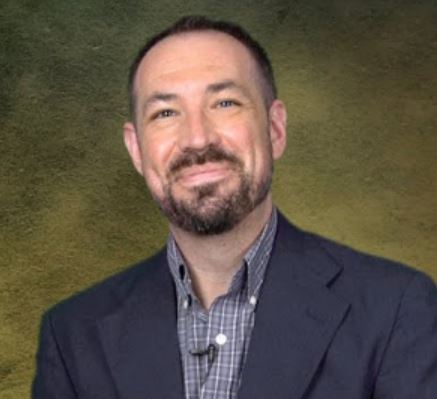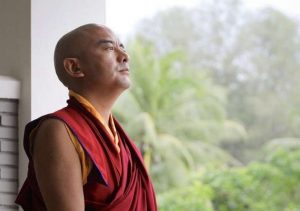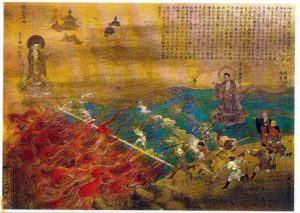
Archeologists unearthed an elephant statue last month in India believed to date to the 3rd century BCE. A team working for The Indian National Trust for Art and Cultural Heritage (INTACH) found the elephant while working in the Daya River in east India in the state of Odisha. The statue, which measures approximately 1 meter (3 feet) in height, is carved from rock in a style resembling other Buddhist statues of elephants found across the state.
Researchers Anil Dhir and Deepak Nayak led the exploration in the Daya River Valley, where Buddhism once flourished. The area is due south of Bodh Gaya, the site of the Buddha’s awakening, and situated along the Bay of Bengal.
“The surrounding region where the elephant was found is rich in Buddhist antiquities, discovered over the last few years,” said Dhir. “In fact, the surrounding regions of Gada Balabhadrapur like Delanga, Kanas, Aragada, Naranagada, Tipuri, Sirai Dandapata have yielded many Buddhist antiquities.” (The Hindu)

According to Dhir, the elephant was cut from a single piece of rock, similar to other Buddhist elephant statues found in the area. One found at Dhauli (also known as Dhaulagiri, some 19 kilometers (12 miles) upstream from the current discovery, is said to be very similar and already has been dated to between 242 BCE and 231 BCE.
Elephants feature prominently in a number of the Buddha’s teachings as well as other religions across India. In the Udana, or “heartfelt sayings,” we find the Buddha and an elephant finding joy in similar paths away from crowds and into seclusion.
The Buddha is there quoted as saying:
The giant elephant,
(Sutta Central)
with tusks like chariot-poles,
agrees heart to heart with the spiritual giant,
since each finds joy in the woods alone.
In another early text, the Buddha uses the story of the blind men and the elephant—common across religious traditions of India at the time—to teach that we tend to see things in limited ways which do not tell us the whole story.
He and the rest of the INTACH team plan for a systematic excavation of the area in hopes of finding more evidence of ancient culture and religion.
Buddhism originated in India in the sixth or fifth century BCE and grew rapidly during the reign of Emperor Ashoka (r. 268–232 BCE). Under Ashoka, the Mauryan empire spread the breadth of India, encompassing parts of modern-day Pakistan, Afghanistan, Bhutan, Nepal, and Bangladesh. Buddhism continued to thrive in India through the Pala (c. 730-1130) and Sena (c. 1070-1230) dynasties as Mahayana ideas and practices flourished alongside tantric practices.
Buddhism began to decline in India for a number of factors, still disputed, between the fifth and twelfth centuries CE. Some scholars posit that Hindu ideas and practices adapted better to meet the needs of people in this period. Others point to economic changes as Buddhist institutions grew large and, at times, cut off from major sources of patronage. A final blow came with the conquest of much of northern India by Muslims, though evidence shows that small pockets of Buddhist practice continued under Muslim rule.
Archeological work continues to find clues to the development and spread of Buddhism, both within India and beyond. Today, Buddhists comprise a small minority of people in India, with just 8.4 million adherents according to a 2011 census, when the total population of the country was 1.2 billion people. The planned 2021 census was postponed due to the COVID-19 pandemic and is expected to take place in 2024.
See more
2,300-year-old Buddhist elephant statue from India is one of the oldest known (Live Science)
Elephant sculpture likely from 3 B.C. found in Odisha (The Hindu)
Heartfelt Sayings 4.5: A Bull Elephant (Sutta Central)
Related news reports from BDG
UPDATE: Archeologists Detail Importance of Buddhist Artifacts Found in Pakistan
Three New Caves Discovered at Ancient Buddhist Site Near Nashik, India
Ancient Buddhist Structures and Murals Discovered in Madhya Pradesh, India
Archaeological Survey of India Begins Restoring Five Buddhist Pagodas in Bagan, Myanmar
Archaeological Survey of India Identifies Buddhist Settlement at Taranga Hills in Gujarat
Archaeological Survey of India to Develop Vikramshila Buddhist University Archaeological Site

















Thanks for the article, it is however disheartening that Hindus have already started hijacking this statue, just look at that red mark, soon these sick people will open a temple nearby.